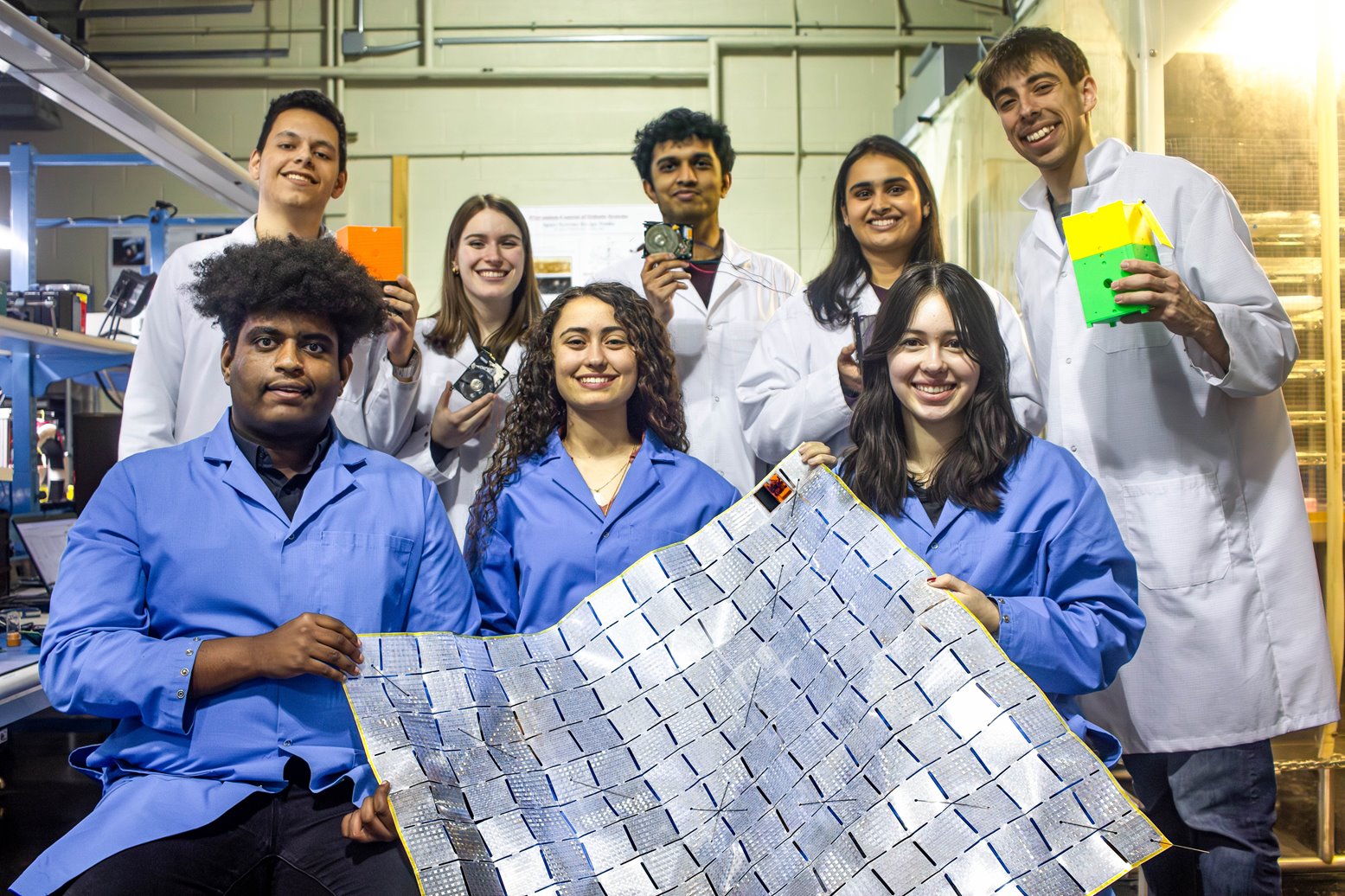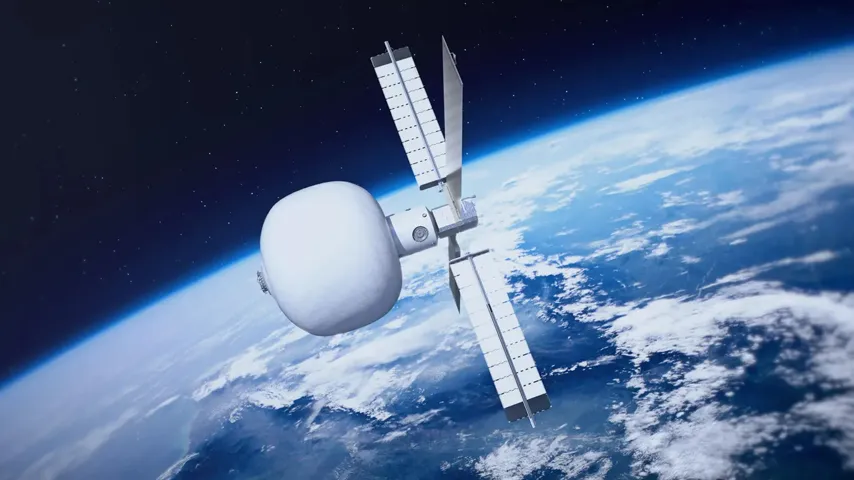Undergrads Develop Light Sails for ISS Testing
Undergrads Develop Light Sails for ISS Testing


A team of students at Cornell University is engineering light sail deployment devices that will be tested aboard the International Space Station.
From left: Adam Yonas, Ethan Francolla, Dionna Parina, Verena Padres, Raghav Inder, Nidhi Sonwalkar, Gabriella Elcsics, Joshua Umansky-Castro.
Space yachts racing through Earth's orbit powered solely by sunlight still exist only in science fiction. But a spacecraft of similar inspiration, called a light sail, is gaining speed.
Light sails use momentum generated by photons of light, explained Verena Padres, a mechanical engineering student at Cornell University. “Instead of having to carry their own propellant with them, these large, typically reflective surfaces allow light to bounce off them. That process transfers the momentum from the light to the sail, pushing the sail.”
Light sails could travel as far as the next star system, Alpha Centauri—but to get there, a better understanding of light sail deployment mechanisms will be needed.
Padres is leading a team of fellow undergrads on the Sailing to the Stars mission, collaborating with the International Space Station (ISS) to test multiple light sail deployers for stability. The mission is funded by an education and workforce development grant through the Center for the Advancement of Science in Space (CASIS) ISS National Labs program.
“We're trying to understand how the differences in the designs of the deployers affect the stability of both the light sail and the deployer that releases the light sail—in orbit,” Padres said.
More for You: Growing the Space Engineering Ranks
But a lot can go wrong with a free-flying spacecraft, added Joshua Umansky-Castro, a Ph.D. student in aerospace engineering at Cornell and co-investigator on Sailing to the Stars.
“It's out there surviving on its own off solar power and batteries and very little communication with humans through radio,” he explained. “So, in addition to the main goal of trying to deploy this light sail correctly, so many other things have to go right to even get to that point.”
That's where testing with astronauts aboard the ISS comes in. “There's a human there to turn it off and on again if something goes wrong,” Umansky-Castro said. “We can have multiple trials instead of one. It adds a little more redundancy, more trials, and more data.”
Attitude kinematics
While traditional light sails were much larger in size than the average human, this innovative version is roughly the size of a poster. Cornell's Alpha light sail has a shape-memory alloy frame that is foldable and expandable, making for easy storage inside a deployment device. It’s also equipped with chip satellites, or ChipSats, which are gram-scale spacecraft that function as flight computers, allowing the light sail to be released on its own as the first-ever free-flying light sail.

Photo: Andrew Filo
“The deployers are going to be spinning while the deployment event occurs,” Padres said. “To stabilize the spin, we're doing something a little bit new. We're using hard drives to try to stabilize it. That idea came from San Francisco-based Skyline Celestial. By spinning up the hard drive disk, we can control what speed it reaches, and in turn, the deployer will rotate in the other direction just because of conservation of momentum.”
Become a Member: How to Join ASME
Impacts of deployment door mechanisms on stability are being investigated as well. When a single door opens to deploy the sail, it creates a torque that could make the spacecraft’s main body rotate in the opposite direction, Padres explained. “With the double doors, when those open up, it should stay relatively balanced and not have that rotation that the single door might experience,” said Padres.
 Photo: Andrew Filo
Photo: Andrew Filo
Padres expects the team to start on engineering demonstration units (EDUs) for the deployers by May 2024. Beyond the critical design review, the team will be testing the EDUs, finalizing the software, and putting the flight units together.
“The goal right now is to have those flight units done and ready to deliver by December 2024, and hopefully [ready] for launch sometime early to mid-next year,” Padres said.
Depending on timing, the Sailing to the Stars team hopes to air a live stream of the ISS astronauts' experiment early next year at Cornell University, a partner museum, or both.
The ISS and beyond
While Sailing to the Stars' main objective is to inform future missions with a better understanding of sail deployments, there are even bigger ideas far beyond the horizon.
“Our mentors, Andrew Filo and Alex Burke, have ideas for [deploying] multiple sails, not just around Earth orbit, but sails that can fly to the moon and do kind of a lunar reconnaissance,” Umansky-Castro said. “Maybe a Mars entry descent and landing with a very lightweight and affordable sail architecture, just to prove what types of missions you can accomplish with this type of technology. And it all starts with just understanding the proper deployment mechanism from these tiny, affordable spacecraft.”
Quiz: What Do You Know About the Saturn V?
Umansky-Castro believes light sails could reach Alpha Centauri in as little as 25 years, where futuristic sails—slightly more lightweight than ones currently under design—could be powered by a large laser array to achieve about 20 percent of the speed of light. This would make it possible to travel to the nearest star system in about 20 years, while data could travel back in about 4 years, he added.
“It's a lot faster than the tens of thousands of years it would take for an everyday spacecraft to make it that far,” Umansky-Castro said.
Sarah Alburakeh is strategic content editor.



